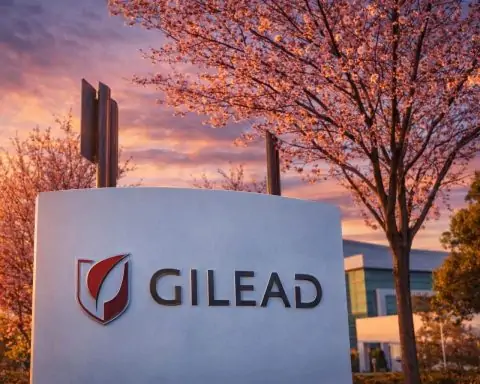- Bitcoin breached $120,000 in July 2025 and traded around $123,000 by month’s end.
- The total crypto market capitalization surpassed $4 trillion for the first time in July 2025.
- MicroStrategy purchased 4,225 BTC for about $472.5 million in mid-July 2025, bringing its holdings to 601,550 BTC.
- Grayscale’s Digital Large Cap Fund was approved to convert into a spot ETF with roughly $755 million in assets, becoming the world’s largest diversified crypto ETF.
- The Genius Act was signed on July 18, 2025, establishing a federal stablecoin framework with 1:1 reserves, monthly audits, and AML requirements.
- Coinbase secured a MiCA license from Luxembourg on July 19, 2025, enabling service across all 27 EU member states.
- Ethereum’s Pectra upgrade, activated in May 2025, raised the staking validator cap from 32 ETH to 2,048 ETH and reduced fees.
- The Solana staking ETF, the REX-Osprey Solana Staking ETF (ticker SSK), launched July 2, 2025 with $12 million in day-one inflows and about $33 million in trading volume.
- GMX sustained a $40–$42 million DeFi hack on July 9, 2025 targeting V1 contracts on Arbitrum and Avalanche, with a 10% white-hat bounty offered.
- CoinDCX disclosed a $44 million hack on July 18, 2025, with losses drawn from its operational treasury and no user funds lost.
Market Rally: Bitcoin, Ethereum and Major Cryptos Soar
Bitcoin Hits All-Time Highs: July 2025 saw Bitcoin surge to unprecedented levels, breaching the $120,000 mark for the first time. By late month, Bitcoin traded around $123,000 [1], cementing its status as one of 2025’s top-performing assets. The broader crypto market followed suit – total crypto market capitalization blew past the $4 trillion milestone for the first time ever [2]. Analysts credited a confluence of bullish factors, from clearer U.S. regulations to a wave of institutional buying, for driving this historic rally [3] [4]. Not everyone was euphoric, however. Financial author Robert Kiyosaki (of Rich Dad, Poor Dad fame) stirred debate by warning that the Bitcoin “bubble” could “burst” soon, even as he had previously cheered its record highs [5]. His contrarian stance highlighted lingering caution in some corners amid the frenzy.
Ethereum and Altcoins Climbed: Ethereum rode the bullish wave too – ETH jumped above $3,700 [6], benefiting from network improvements and growing DeFi activity. In fact, Ethereum’s major mid-year “Pectra” upgrade (activated in May) has started paying dividends, lowering transaction fees and streamlining staking on the network [7] [8]. Among top altcoins, Solana (SOL) enjoyed renewed optimism: SOL hovered around the mid-$150s in July [9], buoyed by technological strides and the debut of a first-of-its-kind Solana staking ETF (more on that later). XRP also made headlines – Ripple’s token exploded out of a long price range, briefly touching $3.65 before stabilizing near $3.50 [10] [11]. Observers attributed XRP’s multi-year highs to improving market sentiment and speculation that an XRP exchange-traded fund (ETF) could be on the horizon [12]. Even a surprise nod from U.S. President Donald Trump – who posted a video explaining Bitcoin on his social platform – “sent a ripple (pun intended) through the entire crypto space,” as one report quipped [13]. Overall, July’s market action showed broad-based strength: bellwether coins like Bitcoin and Ethereum notched double-digit percentage gains, while popular altcoins from Dogecoin to Cardano rode the bullish momentum (ADA nearly hit $0.90 amid rising ETF approval odds [14] [15]). As the month closed, crypto’s total market cap remained firmly in multi-trillion-dollar territory – a stark contrast to the bear market lows of prior years.
Regulatory Breakthroughs and Global Crypto Laws
United States – Landmark Stablecoin Law: In a watershed moment, the U.S. enacted its first comprehensive federal crypto legislation. On July 18, President Trump signed the Genius Act, establishing a clear regulatory framework for stablecoins [16]. The law mandates 1:1 dollar or Treasury reserves for issuers, monthly audits, dual federal–state oversight, and stricter AML (anti-money-laundering) compliance [17]. Industry figures hailed it as “a monumental leap towards the legitimization and mainstream adoption of stablecoins, now more reliable even for large companies and banks.” [18] – in the words of U.S. Senator Cynthia Lummis. The stablecoin greenlight, alongside a broader pro-crypto shift in Washington, unleashed a wave of optimism. The “bull run normativa” (regulatory bull run) helped propel not just Bitcoin and Ethereum, but also gave a boost to compliant altcoins like XRP and DOGE [19]. Congress wasn’t done yet: lawmakers advanced two more crypto bills – the Clarity Act, to delineate SEC vs CFTC jurisdiction over digital assets, and an Anti-CBDC Act to forbid the Federal Reserve from issuing any retail central bank digital currency [20]. Both measures await Senate approval, but if enacted, they promise to solidify the U.S. as a predictable, innovation-friendly jurisdiction for crypto [21] [22]. “The Genius Act week marks the end of the crypto Far West in the USA. Now the challenge is to maintain innovation and attract global capital,” argued fintech analyst Marco Pagani [23], reflecting a consensus that America’s crypto industry is turning a regulatory corner.
Europe and UK – New Rules and a Climate Twist: Across the Atlantic, regulators kept busy as well. Europe’s brand-new anti-money laundering authority (AMLA) drew attention by labeling crypto as a “primary threat for money laundering,” part of a push to implement a single EU-wide crypto rulebook by 2028 [24]. Meanwhile, France floated a provocative proposal: a “green tax” on crypto mining and AI operations, aiming to curb energy usage and emissions [25]. The idea sparked debate about balancing innovation with sustainability. In the U.K., progress was slower – Britain still lags on stablecoin regulation, raising concerns it could “lose centrality in financial innovation” if it doesn’t catch up [26]. However, the UK did signal plans (first unveiled in April) to regulate crypto staking as a distinct activity requiring Financial Conduct Authority authorization [27], aligning in spirit with Hong Kong’s approach (which allows only licensed exchanges to offer staking [28]). July ended with Britain’s long-awaited crypto rules still pending, even as Europe forges ahead with its comprehensive MiCA framework.
Asia – Pushing Forward on Licensing: In Asia, several jurisdictions made notable strides in crypto oversight during mid-2025. Hong Kong finalized its new Stablecoin Licensing Ordinance in May, set to take effect on August 1, 2025 [29]. This regime will require any entity issuing or operating stablecoins in HK to be licensed and meet minimum capital and redemption standards [30] – underscoring Hong Kong’s bid to be a leading, well-regulated crypto hub. South Korea implemented a sweeping Digital Asset Basic Act in June that enacts stricter protections for crypto traders and paves the way for spot crypto ETFs and a potential won-pegged stablecoin in the future [31] [32]. And in Japan, lawmakers approved rules to ease entry for crypto brokerages (creating a new license category for non-custodial brokers) while refining its already progressive stablecoin regulations (e.g. allowing up to 50% of reserves in low-risk bonds) [33] [34]. The first half of 2025 marked a turning point for Asian crypto regulation, with jurisdictions from Singapore to Japan updating laws to encourage innovation under prudent oversight. The overall takeaway: around the world, the era of the “wild west” in crypto is yielding to a more structured environment – one that, in July at least, seemed to galvanize investor confidence rather than dampen it.
Institutional Adoption: Wall Street Piles In
July underscored that big-money players are now fully in the crypto game. From banks to asset managers, institutions made bold moves to integrate crypto into traditional finance and portfolios:
- MicroStrategy Doubles Down on Bitcoin: Michael Saylor’s business-intelligence company (cheekily dubbed a “Bitcoin strategy” company these days) deepened its legendary BTC treasury. In mid-July, MicroStrategy purchased an additional 4,225 BTC for about $472.5 million [35], bringing its total hoard to an eye-popping 601,550 bitcoins (worth ~$71 billion). This latest buy – disclosed on July 14 – means the firm’s holdings have unrealized profits over $28.5 billion [36]. Saylor’s relentless accumulation (and vocal advocacy) has paid off; MicroStrategy’s own stock has surged over 15% in the past month, pushing its market cap above $118 billion [37]. The move signals unabated institutional hunger for Bitcoin exposure as a reserve asset.
- ETF Bonanza and Record Inflows: The crypto ETF boom that began in late 2024 hit new highs in July. In a surprise development, the U.S. SEC approved Grayscale’s Digital Large Cap Fund to convert into a spot ETF – the first multi-asset crypto ETF in the U.S., holding a basket of BTC, ETH, XRP, Solana, and Cardano [38] [39]. With ~$755 million in assets, it will be the world’s largest diversified crypto ETF [40] [41]. (A similar Bitwise 10 Crypto Index ETF briefly won approval as well, before the SEC’s commissioners issued a last-minute stay pending further review [42] [43] – highlighting ongoing regulatory caution around broader crypto funds.) Nonetheless, investor appetite is enormous. Bloomberg analysts now put 95% odds on the SEC approving spot Solana, XRP and Litecoin ETFs by year-end [44]. Meanwhile, existing single-asset ETFs saw massive inflows in July. Ethereum ETFs in particular recorded a single-day inflow of $534 million on July 22 – the third-largest on record – as institutions rotated into ETH [45] [46]. BlackRock’s Ether ETF led the pack with a $426 million surge, helping its Ether fund top $10 billion AUM [47]. Bitcoin ETFs, for their part, still hold roughly $155 billion combined [48] [49] (about 6.5% of all BTC in circulation). These figures underscore an important trend: institutions are pouring capital into crypto investment vehicles at unprecedented scale, effectively intertwining crypto markets with the traditional financial system.
- Wall Street Tokenization Goes Live: In a milestone for “TradFi meets DeFi,” two of America’s oldest financial institutions teamed up to tokenize a classic investment product. Goldman Sachs and Bank of New York Mellon announced a platform to issue digital tokens representing shares of money market funds [50]. Through BNY’s LiquidityDirect system, institutional clients can now buy and sell tokenized money market fund shares, with an immutable blockchain record of ownership maintained on Goldman’s private blockchain ledger [51] [52]. Major asset managers including BlackRock, Fidelity, Federated Hermes, and Goldman’s own asset management arm participated in the pilot rollout [53]. This initiative – revealed on July 23 – is an early but significant step toward modernizing traditional securities via blockchain. By tokenizing ultra-safe money funds (a $5+ trillion market), Wall Street aims to enable 24/7 trading, instant settlement, and easier use of these tokens as collateral [54] [55]. “We’re at the precipice of doing something very special – the democratization of markets,” said CoinFund president Chris Perkins about the promise of tokenization [56]. The project, launched within weeks of U.S. regulatory clarity (the Genius Act’s passage), shows how renewed optimism and clear rules are spurring financial innovation. Indeed, the tokenization trend is “gaining traction” fast [57]: other players like Apollo Global have been experimenting with tokenized funds for crypto-native investors [58], and a slew of real-world asset token offerings (from Treasurys to private equity) are in the pipeline. July’s Goldman–BNY breakthrough suggests that institutional DeFi (or “CeDeFi”) is moving beyond theory into practice.
- Coinbase Expands in Europe: Major crypto exchanges also notched wins. Coinbase, the largest U.S. exchange, secured a MiCA license in the EU – becoming one of the first companies approved under Europe’s new Markets in Crypto-Assets regime [59]. Granted via Luxembourg’s regulator, this license (announced July 19) allows Coinbase to service all 27 EU member countries with a single unified approval [60]. It’s a “milestone in Europe’s crypto regulation” (according to Coinbase’s statement) and a strategic victory for the exchange, which now can expand across a market of 450 million people under a clear rulebook [61]. The move comes as Coinbase and others shift focus overseas in response to U.S. regulatory uncertainty earlier in the year. With MiCA only just enacted, Coinbase’s head start positions it to capture European market share as retail and institutional adoption grow. Elsewhere, rival exchange Gemini was reportedly close to a similar EU license by month’s end [62]. The takeaway: institutional and exchange adoption is increasingly global, following clarity – where regulators lead, big players are quick to follow with investments and expansion.
DeFi and Technology Developments
Ethereum’s Big Upgrade & DeFi Growth: Ethereum’s Pectra hard fork, deployed in Q2, underpinned some of July’s DeFi optimism. Pectra is being hailed as Ethereum’s most significant overhaul since the 2022 Merge [63] – it implemented 15+ Ethereum Improvement Proposals aimed at boosting scalability and user experience [64] [65]. Notably, the upgrade raised the cap per staking validator from 32 ETH to 2,048 ETH [66] [67], letting large stakers consolidate operations and improve efficiency. It also introduced wallet enhancements and other gas-saving tweaks [68] [69]. By July, transaction costs on Ethereum had markedly decreased [70] thanks in part to these protocol improvements, helping rekindle activity in DeFi and NFTs. The on-chain data reflected a stabilizing and maturing DeFi sector: the total value locked (TVL) in DeFi began climbing again alongside crypto prices. One report highlighted that stablecoin supply surpassed $253.7 billion by the end of June [71] – a sign of robust demand for crypto-dollar liquidity as markets turned bullish. Additionally, decentralized exchanges (DEXs) grabbed a record share of trading. In mid-2025, DEXes accounted for nearly 28% of spot crypto volume – an all-time high DEX/CEX ratio [72]. A key contributor was PancakeSwap’s innovative “Infinity” upgrade on BSC, which dramatically increased its market share (from 16% to 42% of DEX volume) by improving efficiency [73]. This suggests that users are flocking to decentralized trading platforms when they offer competitive features, further validating the DeFi model. Lending and yield protocols also saw renewed growth as crypto prices rose, though tempered by security reminders (as discussed below). Overall, July’s bull run provided a tailwind to DeFi metrics: more capital in the system, more activity, and an ongoing march toward “CeDeFi” convergence with traditional finance (e.g. tokenized T-bill funds gaining traction as on-chain collateral). If the current trend holds, analysts expect regulated DeFi insurance and lending products to expand next [74], bridging gaps for institutional participants.
New Crypto Products and Ecosystem Updates: Aside from Ethereum’s upgrade, other blockchain ecosystems rolled out notable innovations in July. The biggest splash came on July 2, when the first-ever Solana staking ETF launched on the NYSE. The REX-Osprey Solana Staking ETF (ticker: SSK) gives traditional investors exposure to Solana (SOL) price gains plus on-chain staking yields – roughly 7% annually – within a regulated ETF format [75] [76]. This groundbreaking fund, which “somewhat unconventionally” won SEC sign-off under existing 1940 Act rules, debuted with $12 million in day-one inflows and $33M trading volume [77] [78]. It marked the first U.S.-listed crypto staking ETF and is being lauded as “a defining moment for digital assets” by partners like Anchorage Digital [79]. By packaging Solana’s network rewards into a familiar investment vehicle, the launch is pioneering the merge of blockchain yields with Wall Street infrastructure. Analysts noted that “there will definitely be demand for these products” and predicted a wave of similar crypto ETFs (for XRP, Litecoin, etc.) in H2 2025 [80]. Indeed, Bloomberg’s ETF experts now peg a 95% chance of spot SOL, XRP, and LTC ETFs being approved before year-end [81] – a staggering shift from just a year ago. On the tech side, Solana’s network continued to attract interest; open interest in SOL futures climbed steadily to $3.5B in July [82] [83], reflecting optimism around Solana’s ecosystem expansion and technical advancements (Solana notably led in new developer growth over the past year [84] [85]). Other ecosystems also saw developments: Layer-2 scaling remained a hot theme (Polygon’s “2.0” proposal garnered attention, and Coinbase’s Base L2 attracted pilots like JPMorgan’s token project). And in Bitcoin land, builders continued to explore Bitcoin Layer-2s and sidechains – though no major BTC upgrade occurred in July, the community buzzed about progress on the upcoming “Drivechains” proposal and the expanding Lightning Network capacity (now over 6,000 BTC). In summary, the crypto infrastructure landscape in July 2025 was one of rapid evolution: core protocols getting faster and cheaper, and novel financial products bringing crypto assets to broader investor audiences.
Major Hacks and Security Incidents
No monthly crypto roundup would be complete without covering the flipside of exuberant growth: high-profile hacks and exploits that keep security teams on high alert. July 2025 unfortunately saw a few significant breaches that reminded everyone of the risks in this fast-moving industry:
- $40M GMX DeFi Exploit: On July 9, attackers hit GMX, a popular decentralized perpetuals exchange, with a sophisticated reentrancy exploit on its older smart contracts. The hack targeted GMX’s V1 liquidity provider (GLP) pools on Arbitrum and Avalanche, exploiting a design flaw in how GMX’s contracts updated global asset prices [86] [87]. By rapidly entering and exiting positions in a single transaction (manipulating the protocol’s AUM calculations), the hacker drained an estimated $40–42 million in assets [88]. GMX developers responded quickly – pausing all V1 contracts and urging users to migrate to the more secure V2 platform [89] [90]. They also publicly offered a 10% white-hat bounty (~$4M) if the thief would return the funds [91]. While GMX V2 was not affected, the incident underscored the dangers of legacy code (“sunset those old contracts,” one audit firm warned) [92] [93]. The exploit was one of the larger DeFi hacks of 2025 so far, contributing to what blockchain analytics firm Chainalysis says is over $2 billion stolen in crypto in just the first half of 2025 – already exceeding 2024’s total [94] [95]. Notably, state-sponsored hackers (like North Korea’s Lazarus Group) have been linked to some of the biggest thefts this year [96], adding geopolitical intrigue to the cybercrime wave. GMX’s case, however, appeared to be opportunistic profit-motivated attackers exploiting a known DeFi weakness, not a nation-state.
- CoinDCX Exchange Hack ($44M): Just days later, on July 18, one of India’s largest crypto exchanges CoinDCX suffered a $44 million breach [97]. In an unsettling coincidence, the hack fell almost exactly one year after a $235M hack on rival exchange WazirX in July 2024 [98]. CoinDCX reported that hackers compromised an internal account used for exchange liquidity operations [99]. The attackers siphoned off tens of millions in various crypto; blockchain sleuth ZachXBT traced some of the loot being laundered through Tornado Cash and even bridged from Solana to Ethereum [100]. Crucially, CoinDCX’s CEO Sumit Gupta assured customers that no user funds were lost – the stolen assets came from the exchange’s operational treasury, and all customer assets remained safely in cold storage wallets [101] [102]. The team isolated the affected server and absorbed the entire loss from CoinDCX’s reserves [103]. Still, the incident raised tough questions about internal security practices. It took the exchange about 17 hours to disclose the breach (after independent analysts noticed large suspicious transfers) [104]. CoinDCX has since enlisted top cybersecurity firms to investigate and strengthen defenses [105] [106]. The hack’s timing – almost to the day of the prior WazirX hack – had the crypto community in India on edge, and regulators monitoring closely. Coming on the heels of multiple DeFi exploits and even a $90M politically motivated hack of Iran’s Nobitex exchange in June [107] [108], the CoinDCX case reinforced that centralized venues remain prime targets despite security improvements. It’s a sober reminder that alongside July’s investment euphoria, the industry must continuously shore up its defenses to protect investors.
- Other Notable Incidents: July fortunately did not see anything on the catastrophic scale of February’s $1.5 billion Bybit wallet hack [109] or May’s $400M Coinbase breach (both earlier in 2025). However, several smaller but noteworthy attacks occurred. For instance, security researchers revealed a $90M hack of Iran’s Nobitex exchange in June was likely carried out by a hacktivist group as retaliation against the regime [110] [111] – a rare case of geopolitics intersecting crypto theft. And on the NFT front, there were reports of a couple high-value NFT wallet phishing scams targeting Bored Ape owners (with losses in the millions), reminding collectors to practice good OPSEC. Despite these incidents, the market’s reaction in July was relatively muted – a sign that crypto markets have grown resilient, quickly refocusing on growth and fundamentals. That said, experts caution that 2025 is on track to be the worst year ever for crypto crime by dollar amount [112], urging exchanges, DeFi devs, and users alike to remain vigilant. The mid-year tally by one count was $2.47B lost to hacks/scams in H1 2025 [113]. The industry’s ability to sustain mainstream adoption may well hinge on convincing users and regulators that it can decisively combat these threats.
NFT and Metaverse Resurgence
After a prolonged cool-down, the NFT market sprang back to life in July. Buoyed by the crypto rally, NFTs and metaverse projects saw renewed interest, higher sales, and even some eye-popping headlines:
- NFT Market Rebounds: By late July, the aggregate NFT market capitalization had climbed above $6 billion again – roughly a 30% jump from the prior month and the highest level since February 2025 [114]. Analysts noted this resurgence was “benefiting from the broader bullish sentiment” across crypto [115]. Trading activity spiked as well. In a 24-hour period mid-month, global NFT sales volume rocketed 154% to about $41.4 million [116], according to CryptoSlam data. This marked one of the strongest trading days of the year for NFTs, as collectors and speculators reentered the market. Blue-chip Ethereum NFT collections that had slumped in the first half of 2025 began recovering – for example, Bored Ape Yacht Club (BAYC) floor prices rose back above 50 ETH, and Art Blocks generative pieces saw rekindled demand. NFT marketplace revenues (royalties) also ticked up correspondingly. While the NFT sector is still far below its 2021 peak frenzy, July’s data suggests a healthy consolidation and renewed confidence in the digital collectibles space.
- Whale Snaps Up 45 CryptoPunks: In a striking show of conviction, an anonymous deep-pocketed collector went on a CryptoPunks buying spree that turned heads. Over the course of July 20–21, the buyer purchased 45 CryptoPunk NFTs for a total of 2,080 ETH (around $7.8 million at the time) [117]. This sweeping grab – one of the largest Punk acquisitions ever in such a short span – immediately drove up the CryptoPunk floor price by ~16% overnight [118]. The entry-level price for a Punk jumped from ~41 ETH to 47.5 ETH on the news [119]. The identity and motive of the buyer remain unknown (speculation ranges from a bullish DAO to a wealthy OG collector doubling down). But the episode injected excitement into the NFT community, widely seen as evidence that “whales” are bargain-hunting iconic NFTs at current valuations. It’s also noteworthy that CryptoPunks – as one of the earliest and most culturally significant NFT collections – continue to be viewed as a long-term store of value in the NFT realm, similar to “blue chip” art. The large purchase coincided with reports that total NFT market cap rebounded past $6B [120], suggesting the buyer timed their move with improving market liquidity. Whether this triggers a broader NFT price renaissance remains to be seen, but it certainly made a splash on NFT Twitter and reignited discussions of rare NFTs as an asset class.
- Metaverse and Gaming Updates: The metaverse sector, which had cooled after 2022’s hype, quietly made progress in July with new launches and funding. Notably, Wilder World, a long-anticipated Web3 metaverse game, announced it will enter “super early access” in late July 2025, opening to public players for the first time [121] [122]. Built on Ethereum and Unreal Engine, Wilder World lets users explore a futuristic 5D city (“Wiami”) with cars, avatars, and a player-driven economy [123] [124]. The early-access release via the Epic Games Store will lift all NDAs and allow streaming, effectively kicking off the beta phase of a next-gen metaverse that’s been in development for years [125] [126]. The team promises monthly content updates and teased major brand partnerships in the pipeline [127]. The launch is significant: it demonstrates that richly immersive, blockchain-enabled virtual worlds are nearing readiness for mainstream users. Elsewhere, The Sandbox, one of the premier metaverse platforms, announced a new $20 million funding round at a $1B valuation (led by Animoca and others) – reinforcing that investor interest in the metaverse hasn’t vanished (Sandbox’s user growth and creator ecosystem are still expanding). Additionally, Netmarble, a South Korean gaming giant, opened a branded virtual “Netmarble Town” inside The Sandbox metaverse in July, complete with mini-games and giveaways, as part of a push to engage global gamers in Web3 [128] [129]. On the NFT gaming side, several new play-to-earn games and NFT mints (from Treeverse’s token to Sugartown’s launch) kept the blockchain gaming community busy [130] [131]. While the metaverse comeback is in early stages, these developments in July suggest a second wind for the sector: more realistic expectations, but steady progress in technology, content, and yes, even funding (a relief for builders concerned the metaverse was last year’s fad). The intersection of NFTs and gaming is especially viewed as promising, with July’s momentum providing a glimmer of the metaverse’s long-term potential.
Conclusion
July 2025 will be remembered as a turning point month for the crypto industry. Major cryptocurrencies achieved new heights – Bitcoin shattered previous records, and Ethereum and others rallied strongly – signaling renewed investor confidence. Crucially, this bullishness was underpinned by tangible advancements: regulatory clarity in the U.S. and abroad, surging institutional participation, and technical milestones like Ethereum’s upgrade and novel crypto investment products. The market’s total value topping $4 trillion for the first time [132] was more than just a number – it symbolized crypto entering a new era of scale and legitimacy. As one report put it, “more rules, more capital, more international attention” define this phase [133]. Indeed, July saw the future of finance increasingly playing out on blockchains, from Wall Street trading tokenized funds [134] to retail investors eyeing token ETFs and stablecoins as everyday tools.
That’s not to say challenges have vanished. Security remains a constant cat-and-mouse battle, highlighted by multi-million-dollar hacks that demanded rapid response [135] [136]. And not all are convinced the boom will last without setbacks – cautionary voices (like Kiyosaki’s bubble warning [137]) suggest volatility is never far away. Yet, the overall tone in July was optimistic and forward-looking. “Crypto has entered a new era of maturity,” declared one weekly analysis [138] – an apt summary of the month’s vibe. With institutional and mainstream adoption accelerating, regulators actively engaged, and innovation humming along, the crypto and blockchain sector heads into the second half of 2025 on a strong footing. If July’s developments are any indication, the stage is set for an even more eventful ride ahead – with the world watching closely as crypto continues to rewrite financial history in real time.
Sources: Crypto News Weekly (Jul 21–27, 2025) [139] [140] [141]; Reuters [142] [143]; CoinDesk [144] [145]; Coinpaper Digest [146] [147]; CoinDesk (Tech) [148]; Cointelegraph [149] [150]; CCN Crypto Hacks Report [151] [152]; CoinDesk (Security) [153] [154]; Medium (Asia regulations) [155] [156].
References
1. en.cryptonomist.ch, 2. en.cryptonomist.ch, 3. en.cryptonomist.ch, 4. en.cryptonomist.ch, 5. newsletter.coinpaper.com, 6. en.cryptonomist.ch, 7. www.ainvest.com, 8. www.coindesk.com, 9. cointelegraph.com, 10. www.rootdata.com, 11. www.rootdata.com, 12. www.rootdata.com, 13. www.rootdata.com, 14. www.coindesk.com, 15. www.coindesk.com, 16. en.cryptonomist.ch, 17. en.cryptonomist.ch, 18. en.cryptonomist.ch, 19. en.cryptonomist.ch, 20. en.cryptonomist.ch, 21. en.cryptonomist.ch, 22. en.cryptonomist.ch, 23. en.cryptonomist.ch, 24. en.cryptonomist.ch, 25. en.cryptonomist.ch, 26. en.cryptonomist.ch, 27. medium.com, 28. medium.com, 29. medium.com, 30. medium.com, 31. medium.com, 32. medium.com, 33. medium.com, 34. medium.com, 35. newsletter.coinpaper.com, 36. newsletter.coinpaper.com, 37. newsletter.coinpaper.com, 38. www.coindesk.com, 39. www.coindesk.com, 40. www.coindesk.com, 41. www.coindesk.com, 42. cryptonews.com, 43. cryptonews.com, 44. cryptonews.com, 45. cryptonews.com, 46. cryptonews.com, 47. cryptonews.com, 48. cryptonews.com, 49. cryptonews.com, 50. www.reuters.com, 51. www.reuters.com, 52. www.reuters.com, 53. www.reuters.com, 54. www.reuters.com, 55. www.reuters.com, 56. www.reuters.com, 57. www.reuters.com, 58. www.reuters.com, 59. www.coindesk.com, 60. www.coindesk.com, 61. bitcoinmagazine.com, 62. www.pymnts.com, 63. www.coindesk.com, 64. medium.com, 65. tatum.io, 66. www.coindesk.com, 67. www.coindesk.com, 68. www.coindesk.com, 69. www.coindesk.com, 70. www.ainvest.com, 71. cryptonews.net, 72. cryptonews.net, 73. cryptonews.net, 74. en.cryptonomist.ch, 75. www.ainvest.com, 76. www.ainvest.com, 77. cointelegraph.com, 78. cointelegraph.com, 79. cointelegraph.com, 80. cointelegraph.com, 81. cointelegraph.com, 82. www.ainvest.com, 83. www.ainvest.com, 84. www.coindesk.com, 85. www.coindesk.com, 86. www.ccn.com, 87. www.ccn.com, 88. www.ccn.com, 89. www.ccn.com, 90. www.ccn.com, 91. www.ccn.com, 92. www.ccn.com, 93. www.ccn.com, 94. therecord.media, 95. www.infosecurity-magazine.com, 96. techcrunch.com, 97. www.coindesk.com, 98. www.coindesk.com, 99. www.coindesk.com, 100. www.coindesk.com, 101. www.coindesk.com, 102. www.coindesk.com, 103. www.coindesk.com, 104. newsletter.coinpaper.com, 105. www.coindesk.com, 106. www.coindesk.com, 107. www.ccn.com, 108. www.ccn.com, 109. www.ccn.com, 110. www.ccn.com, 111. www.ccn.com, 112. www.dlnews.com, 113. www.infosecurity-magazine.com, 114. newsletter.coinpaper.com, 115. newsletter.coinpaper.com, 116. newsletter.coinpaper.com, 117. newsletter.coinpaper.com, 118. newsletter.coinpaper.com, 119. newsletter.coinpaper.com, 120. newsletter.coinpaper.com, 121. magnft.com, 122. magnft.com, 123. magnft.com, 124. magnft.com, 125. magnft.com, 126. magnft.com, 127. magnft.com, 128. magnft.com, 129. magnft.com, 130. magnft.com, 131. magnft.com, 132. en.cryptonomist.ch, 133. en.cryptonomist.ch, 134. www.reuters.com, 135. www.ccn.com, 136. www.coindesk.com, 137. newsletter.coinpaper.com, 138. en.cryptonomist.ch, 139. en.cryptonomist.ch, 140. en.cryptonomist.ch, 141. en.cryptonomist.ch, 142. www.reuters.com, 143. www.reuters.com, 144. en.cryptonomist.ch, 145. www.coindesk.com, 146. newsletter.coinpaper.com, 147. newsletter.coinpaper.com, 148. www.coindesk.com, 149. cointelegraph.com, 150. cointelegraph.com, 151. www.ccn.com, 152. www.ccn.com, 153. www.coindesk.com, 154. www.coindesk.com, 155. medium.com, 156. medium.com










